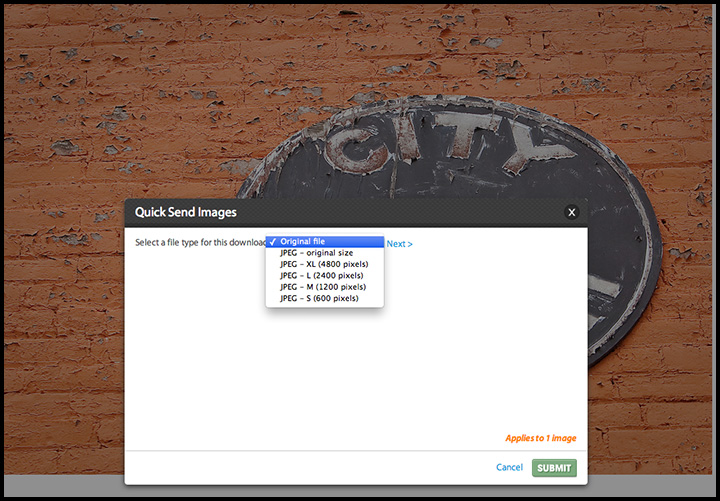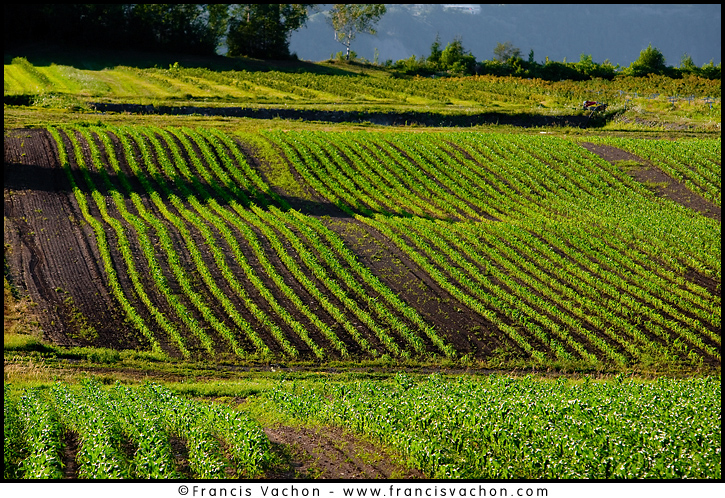“Since roughly 2005 we’ve been aware of a basic problem with how our business works. As the company grows, the overall percentage we pay out to contributing artists increases. As a business model, it’s simply unsustainable.”
That is iStockphoto, the biggest microstock agency, talking to it’s contributors, announcing a royalty cut to as low as 15%.
Great analysis by Jeremy Nicholl: iStockphotos “Unsustainable” Business Model: From Crowd-Sourcing To Crowd-Shafting?


Deux agences s’occupent de la gestion de mes stock photos. Par contre, je fais aussi moi-même la promotion et la vente de mes photos d’archives, ce qui me permet d’éviter les frais de commission et d’atteindre des clients qui ne font pas affaire avec mes représentants. Avoir un bon workflow (« flux de travaux », selon le Grand dictionnaire terminologique) pour la vente de photos stock devient alors extrêmement important.
Je reçois donc l’appel et le courriel alors que je cueille mon fils à la garderie, et que mon téléphone est resté dans l’auto (je n’ai pas encore appris on dirait!). On me demande le prix pour un portrait d’une personne connue que j’ai déjà photographié et qu’ils ont trouvé sur mon blogue. Selon le courriel, il faut une réponse avant la fin de la journée de travail. Je prend mon iPhone et répond au courriel « je suis à la maison dans 5 minutes ».
Une fois bien installé devant mon ordinateur, je contact le client potentiel par téléphone et m’informe de l’utilisation finale. À l’aide de Fotoquote, je leur propose un prix pour un magazine canadien tirant à 80000 exemplaire, joué à 1/16 page.
Une fois que nous nous sommes entendu sur le prix, je me dirige sur la page d’administration de mon Photoshelter (le site derrière ma banque d’image) pour autoriser en téléchargement sécurisé la photo haute résolution désirée. Le client reçoit le lien par courriel, et le téléchargement peut se faire 25 secondes après avoir raccroché avec lui.
Ne reste plus qu’à facturer et attendre le chèque!
After an assignment in Beauport yesterday that was ending around dinner time, just before the golden hour, I decided to head to Ile D’Orléans to beef up my stock images of this beautiful countryside, just East of Quebec City.

Crops grow in a field on Ile D’Orleans, near Quebec City July 22, 2010. The island is still an essentially rural place famous locally for its produce, especially strawberries, apples, potatoes and wineries.

Two cyclists pass by an old house on Ile D’Orleans, near Quebec City. The Island is a very popular destination for cyclists.

Chocolaterie de l’Ile D’Orleans is pictured in Sainte-Petronille, Ile d’Orleans
Stock photo is a question of numbers. And it’s a long term game. After a while playing it, you can determine you return on investment (ROI) by dividing your total stock photo number by your annual stock revenue to get an average sale per image per year.
As an example, let’s say you have 2000 images and made 4000$ in sale over the year. 4000/2000 gives you an average sale per image per year of 2$. If you submit 1000 new images the next year, you can hope to make an additional 2000$ that would be added to the 4000$ from the 2000 images that you already had for a total of 6000$.
Your ROI will hopefully raise over the years, but should not fluctuate too much. After a couple of year of monitoring your yearly ROI to make sure it is stable, you can start to plan your trips or your shooting.
If you go on a five days travel that would cost you 700$ on hotel, meal and gas, how many usable images do you need to bring back to break even after a year? Let’s use again the 2$ of our previous example. 350 image would fetch you 700$. 350 images over 5 days would require you to photograph 70 usable images per day. Would you be able to do it? If not, would you mind to wait more that a year before breaking even?
What about makeup artist and model fee if you plan to shot lifestyle stock photo? What would be the cost, and how many images can you produce out of it?
This is a long (but hopefully informative) introduction to say that I recently went to Toronto. I explained in a previous post that I went on a five days photo spree before a 3 days photojournalist conference. I calculated the extra expenses of those five day and it made sense to do it. According to my ROI calculated from my 3 years doing stock photo and the number of image I submitted to agencies, it should take me a year to break even. Everything after that would be a net profit.
Yesterday, I received my Canadian Press sale report and, with my images being there for only half of the month, 4 images sold. Actually 3, but one sold twice. Let’s see where I am in year!
At the end of April, I attended the Photojournalism 2010 conference in Toronto. I decided to arrive 5 days earlier to shoot stock photos, as you probably noticed with the last few day posts.
Since I was paying hotel and restaurant, my time was precious. I could have paid the ferry to the islands and spend an evening getting the perfect sunset shot of Toronto skyline and the CN tower, the most known landmark of the city. But that would have been time not wisely spent, since it was a bit too obvious photo.
Microstock agencies are already filled with postcard shot of every landmark of the world, sold at a buck each. I can afford to spend to time shooting the Chateau Frontenac here in Quebec City, since it’s my hometown and I drive by often, but the time I would spend getting a good shoot of the CN tower was time I was not spending shooting something else in a city that I don’t visit often (enough). When you are a stock photographer, but not the microstock type, you have to readjust the way you are shooting and what you are shooting.
That said, I DID shoot the CN Tower here and there, but not in the obvious way. Here are three of them.

CN tower is seen behind the Canada Malting Co. grain processing tower in Toronto. The tower is part of the earlier industrial era of Toronto heritage, concentrated along the Toronto Harbour and lower Don River mouth

CN Tower is seen behind monument of the Irish Famine Memorial in Toronto.

The CN Tower is silhouetted against a bright sun in Toronto. The CN Tower, located in downtown Toronto, Ontario, Canada, is a communications and observation tower standing 553.3 metres (1,815 ft) tall.
Chaque fois que j’entends parler d’un truc que j’aimerais photographier, que ce soit un beau village, une usine, une mine abandonné, un refuge pour animaux, une réserve amérindienne, etc., et qui pourrait bien s’ajouter à ma banque de stock photo, j’utilise la fonction « My map » (mes cartes) de Google Map pour l’ajouter à une carte personnalisée que j’ai créé.
Lorsque je dois me déplacer à l’extérieur de Québec, en assignation ou par plaisir, je n’ai qu’à regarder sur ma carte s’il n’y a pas des trucs à photographier dans le coin. Lorsqu’il y a plusieurs éléments dans la même région, je peux même planifier un voyage juste pour photographier ces éléments.








